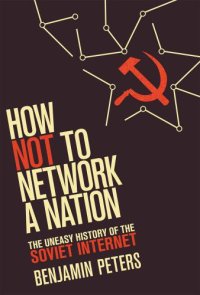
Ebook: How Not to Network a Nation: The Uneasy History of the Soviet Internet
Author: Peters Benjamin
- Tags: Computer networks, Computer networks--Soviet Union--History, Internetworking (Telecommunication)--Research--Soviet Union--History, History, Computer networks -- Soviet Union -- History, Internetworking (Telecommunication) -- Research -- Soviet Union -- History, Soviet Union
- Series: Information policy
- Year: 2017
- Publisher: The MIT Press
- City: Soviet Union
- Language: English
- mobi
A global history of cybernetics -- Economic cybernetics and its limits -- From network to patchwork : three pioneering network projects that didn't, 1959 to 1962 -- Staging the OGAS, 1962 to 1969 -- The undoing of the OGAS, 1970 to 1989 -- Appendix A. Basic structure of the Soviet government -- Appendix B. Annotated list of Slavic names -- Appendix C. Network and other project acronyms.;Between 1959 and 1989, Soviet scientists and officials made numerous attempts to network their nation - to construct a nationwide computer network. None of these attempts succeeded, and the enterprise had been abandoned by the time the Soviet Union fell apart. Meanwhile, ARPANET, the American precursor to the Internet, went online in 1969. Why did the Soviet network, with top-level scientists and patriotic incentives, fail while the American network succeeded? In 'How Not to Network a Nation, ' Benjamin Peters reverses the usual cold war dualities and argues that the American ARPANET took shape thanks to well-managed state subsidies and collaborative research environments and the Soviet network projects stumbled because of unregulated competition among self-interested institutions, bureaucrats, and others. The capitalists behaved like socialists while the socialists behaved like capitalists.
Download the book How Not to Network a Nation: The Uneasy History of the Soviet Internet for free or read online
Continue reading on any device:

Last viewed books
Related books
{related-news}
Comments (0)